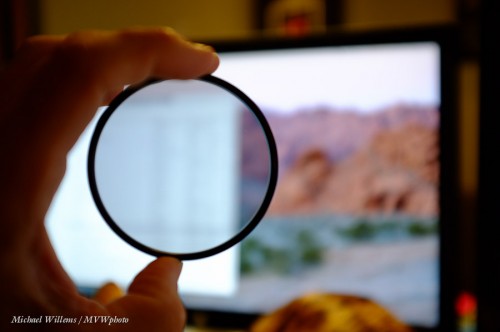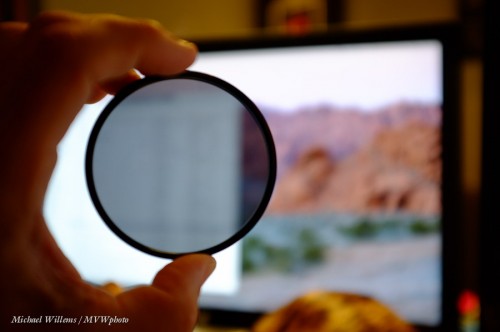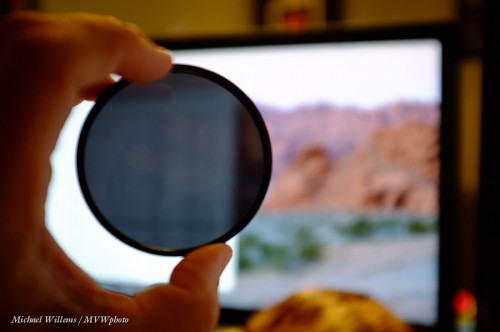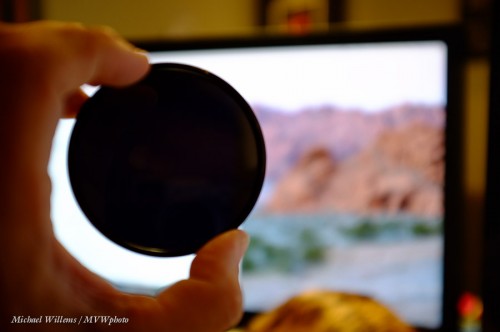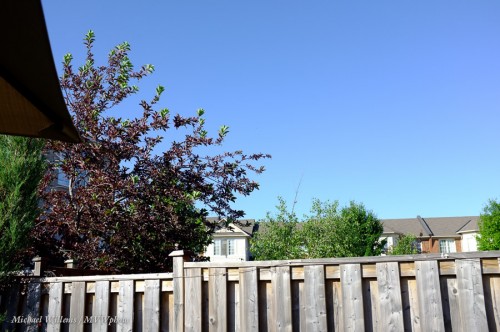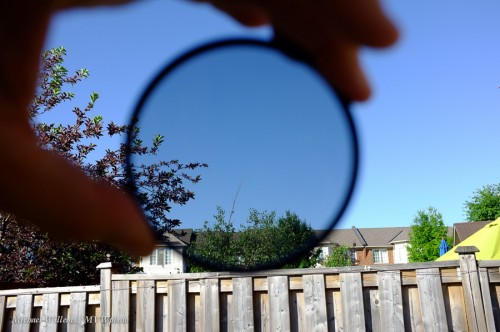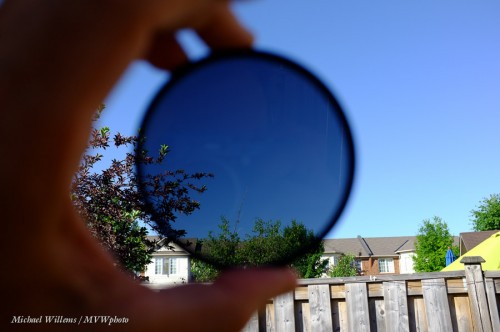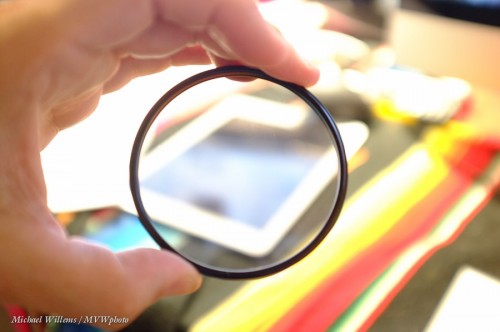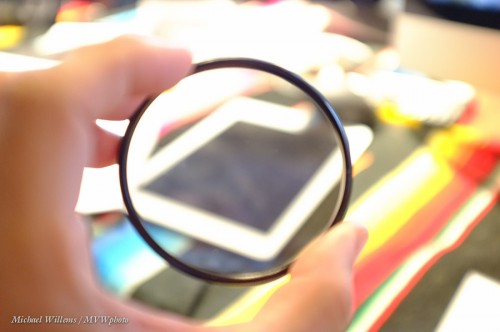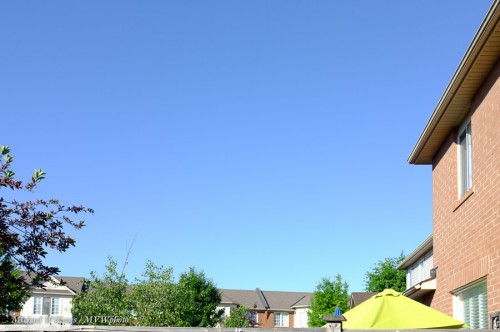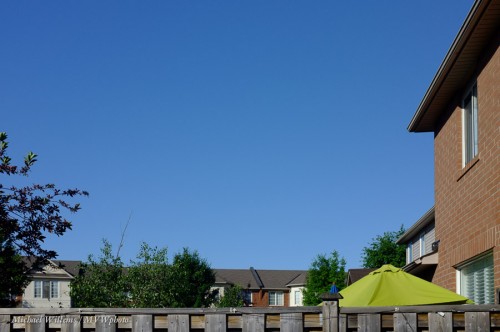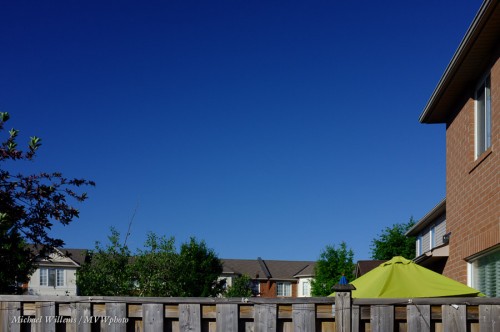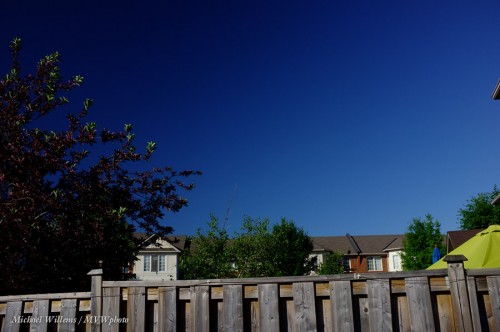Happy summer (southern hemisphere friends, happy winter…)
Summer. Hence Sun. Right? So you need a polarizing filter for your lenses?
Yes, this is a good filter to have. A polarizer, as you know if you have been reading, actually does stuff:
- If you turn it to the correct angle, it makes the sky go darker (best at one angle, roughly perpendicular to the sun).
- It removes reflections (non-metallic reflections, like those on the surface of water).
- It can often help saturate colours (especially greens, like in vegetation).
- Fringe benefit: it darkens a little (usually, about a stop), so it acts like an ND filter. But just a little.
Here, a polarizer. In picture 1, it lets through polarized light (emitted by the LCD screen). In picture two, it is rotated to let through less. In picture three, it is rotated to allow even less polarized light to enter; and picture 4, none.
Below, the same while looking at the sky, which emits polarized light as well as unpolarized light: no polarizer; a polarizer rotated to allow in most polarized light; and one rotated to allow in almost no polarized light.
You will hear many people talk about “circular polarizers”, as opposed to “linear polarizers” You need a circular one for a digital camera. Let me explain.
A linear polarizer is just a polarizer. It lets through all, or none, or some amount of, polarizer light. But polarized light like this can confuse your camera’s AF and exposure sensors. So a circular polarizer is one that has two layers: the polarizer, followed by a filter that makes the light circularly polarized (basically, unpolarized). That way, no bad effect on the AF anmd exposure sensors.
This also allows you very easily to see whether your polarizer is circular: a circular polarizer only works one way. Turn it around (screw threat in front), and it does not work. Because the second filter makes the light basically unpolarized, so that the subsequent polarizer does not do anything.
So if your polarizer works the same whether you look through it one way or the other way, it is a linear polarizer, and will give you problems.
Here’s a polarizer taking away reflections (again, only off non-metallic surfaces):
Note that a polarizer can give you issues with mirrorless cameras. My Fuji x100, for instance, does not show the real effect when I use the electronic viewfinder. Beware!
Finally, a sequence with the polarizer turned to let progressively less polarized light in (using the Fuji x100):
You will note in the last images that part of the sky is darker than other parts of the sky. Yhis is becuse, as said earlier, teh angle matters. Parallel to the sun (i,.e.. the sun is behind you or in front of you) the polarizer does very little; at 90 degree angles it does a lot more. The only solution: use a longer lens.
And the last note: if you have only one polarizer, you can use only one lens? Nope. here, I used a large thread polarizer, a 77mm, simply held in front of the tiny x100 lens. Where there’s a will…
___
Have you had a look at my five e-books? All are over 100 pages long, well organized, illustrated, and a great source of information that gets you started immediately. Head over to learning.photography now!

